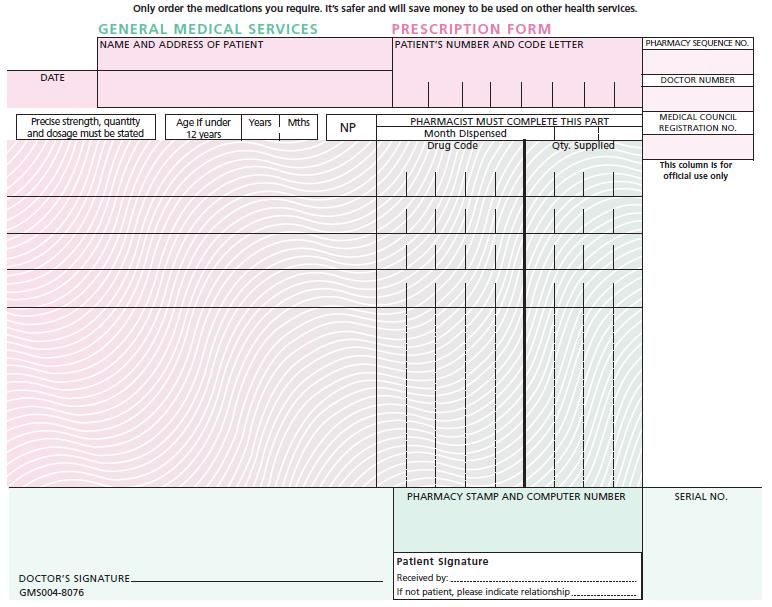Primary care reimbursement is a pressing issue affecting health systems across the United States, where a decline in financial support has left many primary care providers struggling to meet rising patient demand. As healthcare funding becomes increasingly tied to innovative payment models, initiatives like Accountable Care Organizations (ACOs) are reshaping the landscape. These entities aim to reward primary care practices for focusing on preventative care and patient-centered care, rather than solely on the quantity of services provided. The recently introduced prospective payment model under ACO PC Flex offers an exciting approach, allowing for increased up-front funding aimed at improving overall primary care quality. With a focus on keeping patients healthy and avoiding costly hospital visits, this model presents a potential solution to the primary care crisis in America.
The topic of primary care reimbursement can also be described as the financial system that compensates healthcare providers for delivering essential medical services. As the demand for medical attention grows, practices are expected to adapt to new frameworks such as prospective payment models, which provide preemptive financial support to encourage better health outcomes. This shift is particularly pivotal in Accountable Care Organizations (ACOs), where financial incentives are designed to prioritize preventative measures and holistic patient management. By maximizing funding through innovative structures, the aim is to enhance the quality of patient experiences and reduce overall healthcare expenditures. Ultimately, evolving reimbursement strategies are crucial for fostering a sustainable primary care environment that meets community health needs.
Understanding Primary Care Reimbursement Challenges
Primary care reimbursement in the United States faces significant challenges, primarily due to an outdated fee-for-service model that prioritizes specialist care over essential preventative services. This model not only undervalues the crucial role of primary care providers but also leads to unsustainable workloads for clinicians, forcing them to see more patients in a limited time. This scenario often results in reduced quality of care as physicians struggle to address the comprehensive needs of their patients amidst the pressure for higher throughput.
Moreover, the complexities of healthcare funding create another layer of difficulty for primary care practitioners. The disparity in reimbursement rates between specialists and primary care doctors reflects broader systemic issues in healthcare financing. As specialists receive higher payments for performing procedures, primary care—which focuses on long-term health management and preventative care—remains underfunded. If we want to cultivate a healthier society, it’s imperative to rethink and reform the reimbursement strategies that currently disadvantage primary care.
The ACO PC Flex Initiative Explained
The new ACO PC Flex initiative represents a transformative approach to primary care funding. By providing upfront, prospective payments to primary care organizations, this model enables them to allocate resources more effectively towards preventative care and chronic disease management, rather than reacting to crises. This shift is aimed at reducing hospital admissions and improving overall patient outcomes. ACO PC Flex incentivizes physicians to offer comprehensive care, which is essential in maintaining a healthier population and generating long-term savings for the healthcare system.
Unlike traditional ACOs, which operate on a retrospective payment model, ACO PC Flex empowers practices by providing necessary capital before services are rendered. This proactive funding strategy allows healthcare providers to invest in infrastructure, technology, and patient engagement programs that enhance care delivery. By reorienting priorities towards preventative efforts, we can address rising health issues early on and ultimately shift the focus from episodic sickness to sustained health, benefiting both patients and the healthcare system.
The Benefits of a Prospective Payment Model
The prospective payment model embodies a significant shift in how primary care is financed, paving the way for a more sustainable healthcare system. This model directly supports the needs of primary care providers by ensuring that they receive adequate funding to deliver continuous and preventative care, which is often neglected in fee-for-service arrangements. With guaranteed income, practitioners can focus on offering personalized patient-centered care, conducting regular health screenings, and supporting chronic disease management without the looming pressure of financial constraints.
Additionally, ACO PC Flex incentivizes care that keeps patients healthy and out of the hospital, which is crucial given the rising healthcare costs associated with emergency interventions. By emphasizing the importance of preventative care and early intervention through a prospective payment strategy, healthcare systems can save significantly on long-term costs, while also improving patient health outcomes. This new framework not only ensures the sustainability of primary care practices but also fosters a culture of healthcare that prioritizes wellness and preventative measures.
Challenges Facing the ACO Model
Despite the promising aspects of the ACO PC Flex model, there are several challenges it must navigate to achieve widespread success. Primary among these is the need for acceptance and adaptation by healthcare providers who may be resistant to changing their established practices. Transitioning to a prospective model requires a cultural shift within primary care that emphasizes collaboration, innovative care delivery, and comprehensive patient engagement.
Furthermore, as ACOs strive to demonstrate their value through improved care and reduced costs, they will face scrutiny regarding their performance metrics and the sustainability of their financial models. Ensuring that primary care providers can effectively manage their expenditures while delivering high-quality care is paramount. The continued evolution of ACOs will require ongoing evaluation and adjustment, particularly regarding reimbursement rates and patient outcomes, to address the diverse needs of the healthcare landscape.
Incentives for Preventative Care and Patient-Centered Models
The ACO PC Flex initiative aims not only to improve reimbursement models for primary care but also to promote preventative care and patient-centered practices. This approach aligns with the growing recognition that prevention is far more effective and economical compared to reactive treatment of health issues. By incentivizing healthcare providers to focus on preventative measures—such as routine check-ups, screenings, and health education—this model fosters a healthier patient population and reduces the incidence of costly medical interventions.
Additionally, patient-centered care emerges as a cornerstone of ACO PC Flex, as the model encourages practitioners to establish strong relationships with their patients. Under this framework, healthcare providers are better equipped to understand the unique needs of their patients, leading to tailored interventions that promote overall well-being. By shifting the focus to preventative care and cultivating patient engagement, this initiative could ultimately lead to a more sustainable healthcare system, optimizing resources and improving health outcomes.
The Future of Primary Care Funding
The ACO PC Flex model represents a significant advancement in the future of primary care funding, with the potential to reshape how primary care is delivered across the U.S. If successful, it could provide a blueprint for funding reform that emphasizes the value of primary care services, aligning incentives with health outcomes rather than service volume. This could lead to increased investment in primary care infrastructure, ensuring that practitioners are well-equipped to meet the needs of their communities.
Furthermore, if ACO PC Flex proves effective for Medicare beneficiaries, there may be opportunities to expand similar strategies across Medicaid and private insurance landscapes. Such developments could enhance healthcare accessibility and affordability for diverse populations, particularly those facing economic barriers. As the healthcare industry evolves, embracing innovative funding models that prioritize primary care will be crucial for building a healthier, more resilient society.
Addressing the Needs of Underserved Populations
The introduction of ACO PC Flex is particularly timely as it seeks to address the needs of underserved populations who have historically faced barriers to accessing quality primary care. By ensuring better reimbursement for primary care providers serving these communities, this model can enhance the quality of care available to low-income individuals, Medicaid patients, and those without insurance. These populations often have greater healthcare needs and can significantly benefit from increased investment in primary care services.
By focusing on preventative care and allocating resources for effective outreach and engagement, ACO PC Flex aims to narrow health disparities within vulnerable populations. Improved access to primary care can lead to better health outcomes, reduced hospital admissions, and lower healthcare costs for these communities. As ACOs adopt strategies to cater to these underserved populations, we can begin to envision a future where equitable healthcare access is a reality for all.
The Impact of Policy Changes on Primary Care
Policy changes play a crucial role in shaping the landscape of primary care reimbursement and accessibility. Initiatives such as ACO PC Flex, driven by the Affordable Care Act, highlight the importance of innovative funding models that prioritize primary care. As policies evolve, they have the power to foster environments where primary care can thrive, ensuring that providers are compensated fairly and patients receive the necessary care without the threat of financial hardship.
However, continuing advocacy is essential to ensure that these changes take root and address the systemic issues within the healthcare system. Promoting policy changes that support primary care models will be critical for sustaining improvements in public health outcomes. Engaging stakeholders across the healthcare spectrum—from policymakers to patients—will help cultivate a supportive infrastructure that prioritizes health equity, access, and quality of care.
Conclusion: A New Era for Primary Care
The ACO PC Flex initiative marks a promising step toward revitalizing primary care in the U.S. It reframes how we think about reimbursement, focusing on proactive and preventative care rather than reactive treatment. As this model takes shape, it has the potential to not only enhance the financial viability of primary care practices but also improve patient outcomes and overall health system efficiency.
In conclusion, the success of ACO PC Flex and similar initiatives will ultimately depend on continued commitment to reforming healthcare funding, addressing the diverse needs of patients, and fostering a culture of collaboration among providers. By embracing these transformative changes, we can usher in a new era for primary care—one that prioritizes health, accessibility, and patient-centered services, making strides towards a healthier future for all.
Frequently Asked Questions
What is primary care reimbursement and how does it affect doctors?
Primary care reimbursement refers to the payment structure for primary care services provided by doctors. Currently, it is relatively low compared to specialist care, which can create financial strain on primary care practitioners. Reimbursement models like ACOs (Accountable Care Organizations) and prospective payment systems aim to address these issues by incentivizing high-quality care while ensuring better funding for primary care.
How do ACOs improve primary care reimbursement?
Accountable Care Organizations (ACOs) improve primary care reimbursement by offering a model that rewards providers for delivering high-quality care at lower costs. ACOs incentivize doctors to manage patient care effectively, keeping costs down, and allow for shared savings which can enhance funding for primary care services.
What are the benefits of the prospective payment model in primary care reimbursement?
The prospective payment model offers an upfront payment to ACOs before services are provided, unlike traditional fee-for-service models. This approach increases primary care reimbursement, encourages preventive care, and allows practitioners to invest more time in patient counseling and holistic health management without the stress of counting expenses against a budget threshold.
How does preventative care factor into primary care reimbursement?
Preventative care is integral to primary care reimbursement models like ACOs, which emphasize keeping patients out of the hospital and preventing serious health issues. By providing financial incentives for preventive services, these models help to reduce overall healthcare costs and improve patient outcomes in primary care settings.
Will the ACO PC Flex model change the future of primary care reimbursement?
If successful, the ACO PC Flex model could influence future primary care reimbursement, particularly for Medicare patients. It aims to create better funding structures and incentives for preventative care, which may motivate private insurers to adopt similar models, thereby enhancing the overall financial sustainability of primary care.
What challenges does primary care reimbursement face in the current healthcare system?
Primary care reimbursement faces several challenges, including lower payment rates compared to specialist care, the high volume of patients needing attention, and institutional pressure on clinicians to prioritize quick visits over comprehensive care. These factors create barriers to improving primary care services and reimbursement rates.
How can primary care providers receive better reimbursement from Medicaid?
Improving primary care reimbursement from Medicaid requires advocating for higher payment rates, as Medicaid currently offers lower reimbursement compared to Medicare. Strategies could include policy changes, increased funding for preventive services, and demonstrating the value of primary care in managing complex patient needs.
| Key Issues in U.S. Primary Care | Causes | Impact | |
|---|---|---|---|
| High patient volume expectations on clinicians | Burnout among primary care providers and reduced quality of care | ||
| Low reimbursement rates for primary care | Limited resources for preventive care and patient management | ||
| Increased complexity of medical information | Challenges in providing comprehensive patient care | ||
| Implementation of Accountable Care Organizations (ACOs) | Improved incentives for high-quality, cost-effective care | ||
| ACO PC Flex initiative | Increased upfront payments to support primary care and patient health | ||
Summary
Primary care reimbursement is a pressing issue in the U.S. healthcare system, significantly affecting access and quality of care. The introduction of innovative models like the ACO PC Flex initiative signals a potential shift towards more sustainable funding for primary care. By offering prospective payments and incentivizing preventative care rather than reactive services, this initiative aims to alleviate some of the financial burdens on primary care providers. The goal is to achieve a healthier patient population while ensuring clinicians are adequately compensated for their vital role in the healthcare system.




